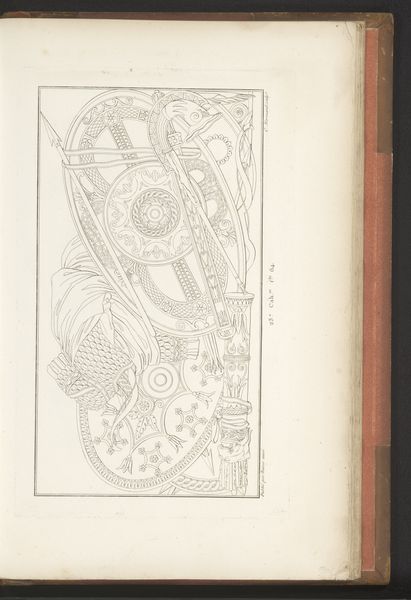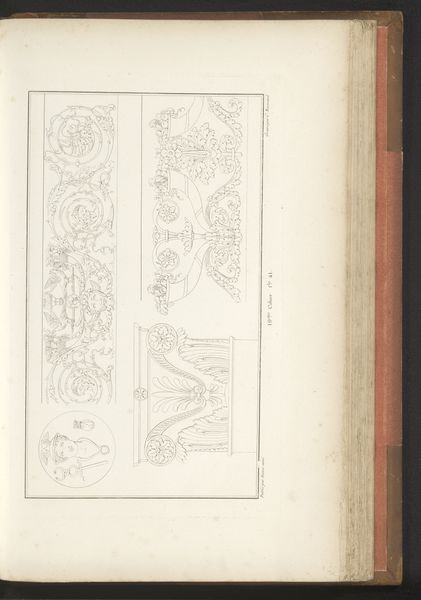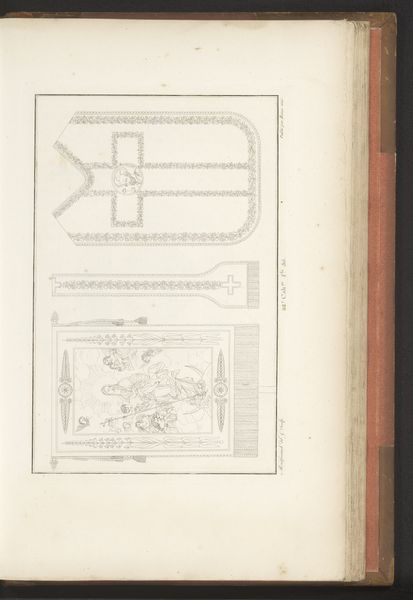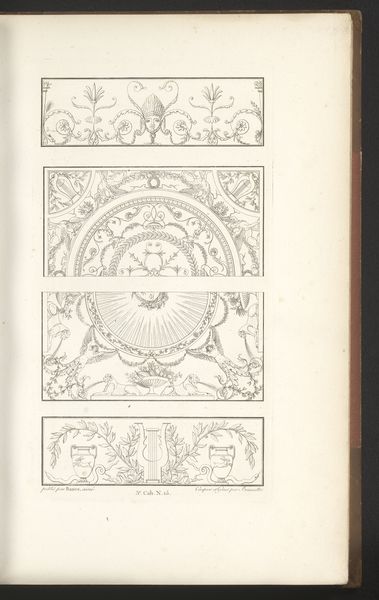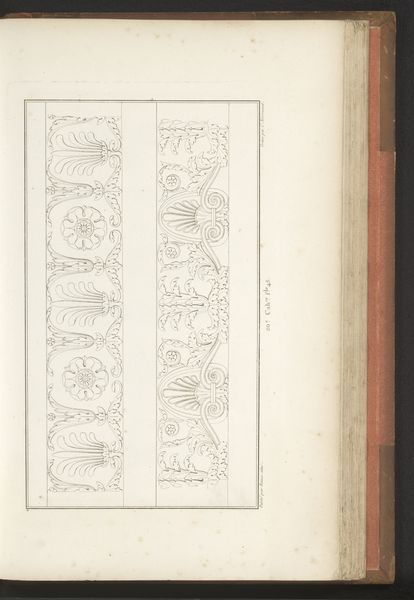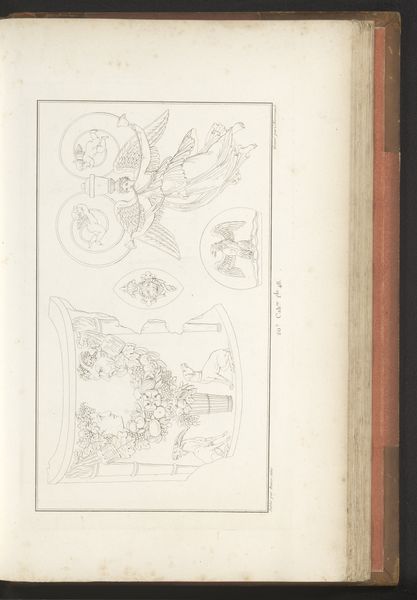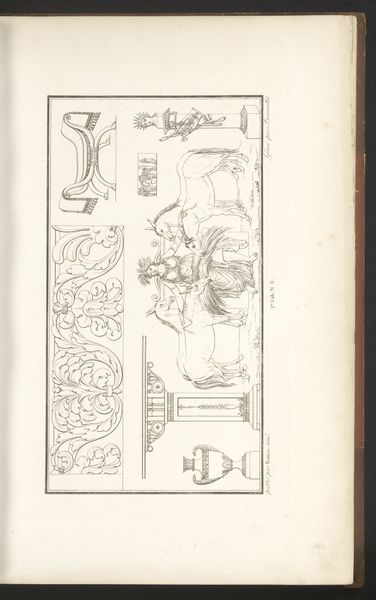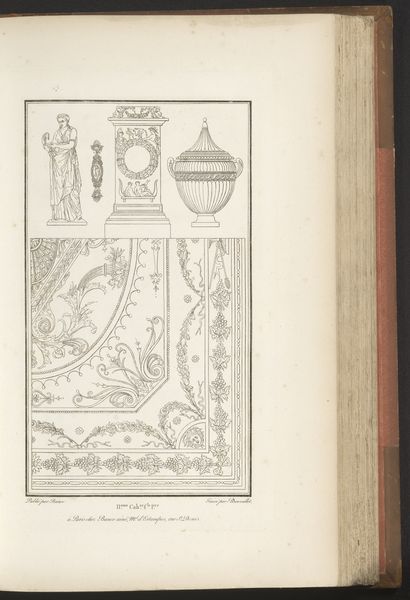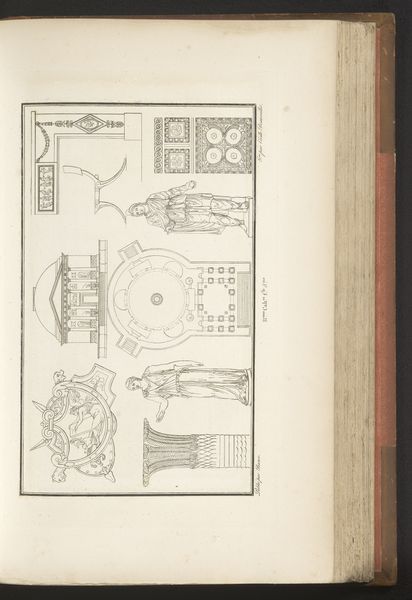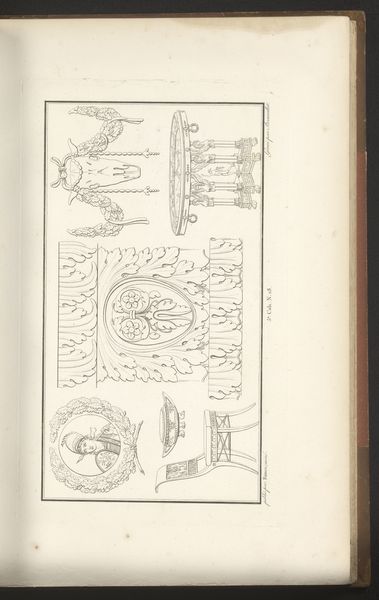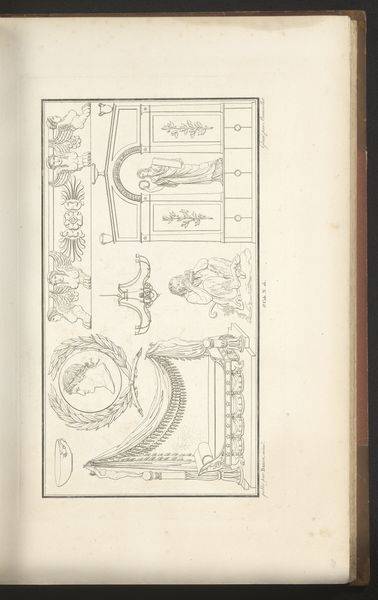
drawing, ink, engraving
#
drawing
#
neoclacissism
#
ink
#
geometric
#
line
#
engraving
Dimensions: height mm, width mm
Copyright: Rijks Museum: Open Domain
Editor: Here we have "Wapentrofee," an 1820 engraving in ink, by Charles Pierre Joseph Normand. It looks like a collection of shields and weapons, almost like a trophy arrangement, but the delicate lines and lack of shading give it an oddly peaceful feel. What's your take on it? Curator: I’m immediately drawn to the material implications of depicting weapons and shields in this way. Consider the labor and resources – the iron, wood, and craftsmanship – invested in each object. An engraving like this reduces these very real material objects into pure visual design. Editor: So it's about how it’s *made* rather than just what it depicts? Curator: Exactly. The labor that would have been required for armaments then repurposed to reproduce these forms in ink. There's a societal commentary there on war. Think of the social context: 1820, post-Napoleonic wars. Europe is trying to rebuild, and here we have images of implements of war, transformed through craft, design and print, into something almost decorative. Is this elegiac? An acknowledgement of a need to return to domestic production after periods of war? Editor: So, from deadly serious to…almost ornamental? Are you saying this is about reframing our relationship to militarization by shifting the means of production? Curator: In a sense. The printmaking process itself, the multiple reproductions possible from a single engraving, speaks to the mass mobilization inherent in war, now used to create images intended to, perhaps, advocate for peace by celebrating craft rather than conquest. It offers a unique, if indirect, perspective on the shift from militarism to domestic industry. Editor: That's a really different way to see it, moving from just *looking* at it, to thinking about how and why it was *made*. Curator: Precisely! Focusing on materiality gives us insight that a simple viewing never could. Editor: I will definitely keep that in mind moving forward, paying more attention to materials and context.
Comments
No comments
Be the first to comment and join the conversation on the ultimate creative platform.
